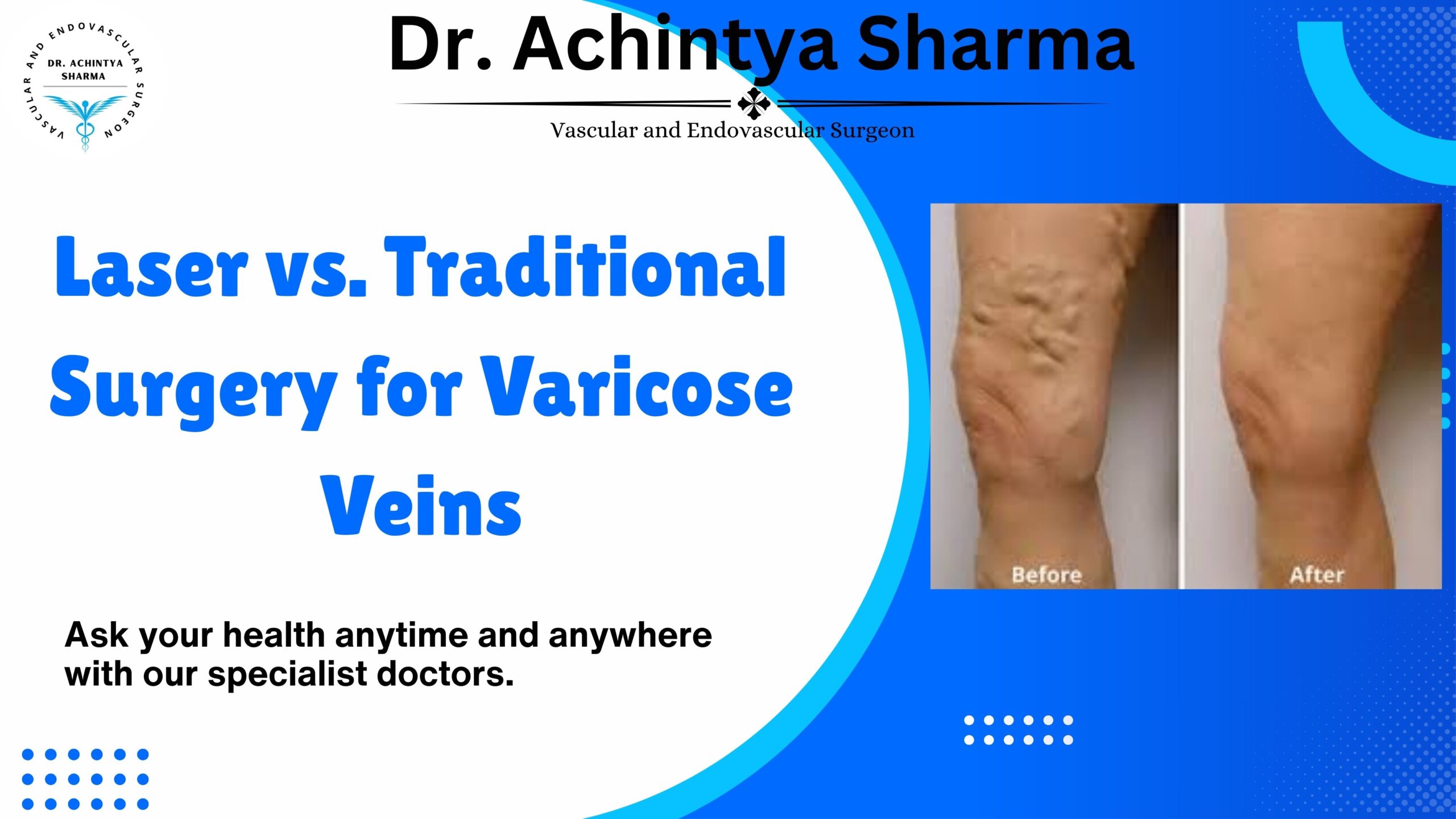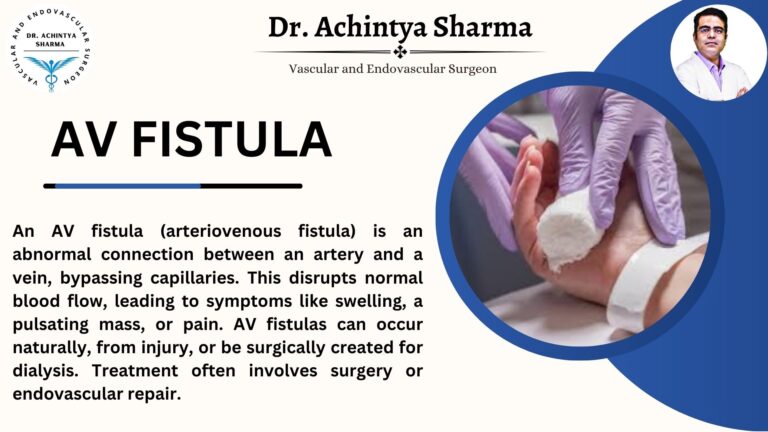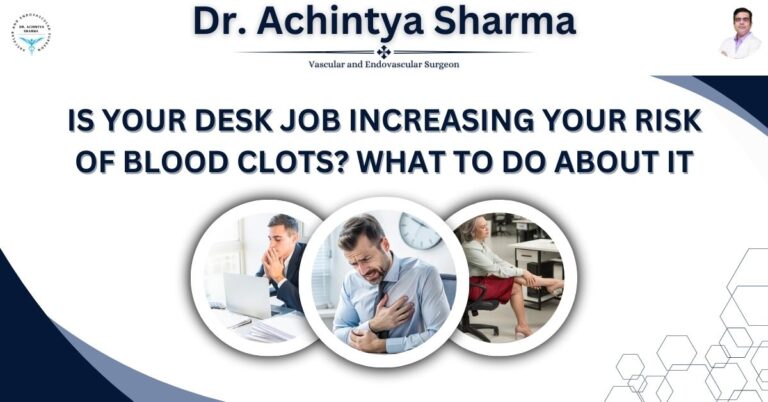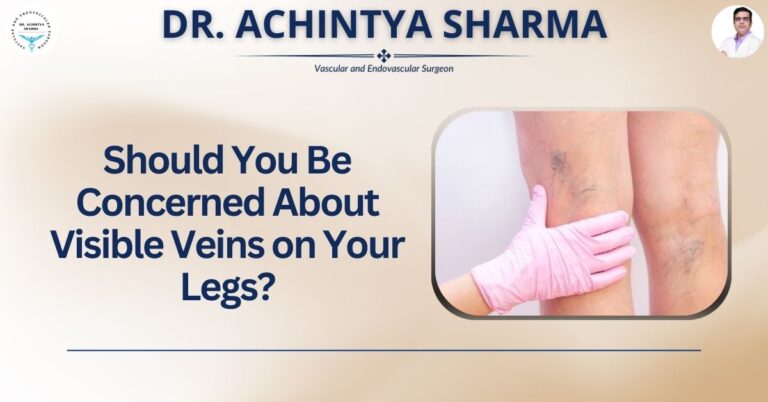If you’ve ever noticed bulging, twisted veins—mostly on the legs—that feel heavy or ache after standing too long, chances are you’re dealing with varicose veins. You’re not alone. According to the Society for Vascular Surgery, nearly 35% of people in India suffer from this common condition.
While it’s often considered just a cosmetic issue, varicose veins can lead to serious discomfort, skin ulcers, and even blood clots if left untreated. For decades, traditional vein stripping surgery was the go-to remedy. But today, medical science has given us a far more advanced, less invasive, and more effective option: laser treatment.
Let’s dive into what varicose veins are, and more importantly, why laser treatment is fast becoming the preferred solution over traditional surgery.
Understanding Varicose Veins
Varicose veins occur when the valves inside the veins malfunction, causing blood to pool rather than flow efficiently back to the heart. This pressure enlarges the veins, making them twisted and visible under the skin.
They’re most common in the legs due to the added pressure of standing and walking. Factors like age, genetics, pregnancy, and obesity increase the risk.
Back When Surgery Was the Only Option
Traditional surgery, commonly known as vein stripping, involves removing the affected vein through small incisions in the skin. It’s performed under general anesthesia and typically requires a hospital stay. The procedure has been effective for decades, but it comes with its share of drawbacks:
- Invasive procedure
- Longer recovery time (2–4 weeks)
- Post-op pain and bruising
- Higher risk of infection or complications
While it’s still used in some cases, modern patients often look for treatments with less downtime and fewer side effects.
“A Gentle Touch with Powerful Results: The Laser Treatment Era”
Thanks to advancements in technology, Endovenous Laser Treatment (EVLT) has revolutionized how we treat varicose veins. In this minimally invasive procedure, a laser fiber is inserted into the affected vein, delivering heat that causes the vein to collapse and seal shut. The blood is naturally rerouted to healthier veins.
Let’s explore why laser therapy is leading the way, especially under the skilled hands of vascular specialists like Dr. Achintya Sharma, a renowned vascular and endovascular surgeon based in Delhi.
1. Minimally Invasive, No Stitches Needed
Laser treatment is typically done under local anesthesia, meaning patients are awake and comfortable throughout the procedure. The incision is tiny—usually the size of a pinhole—so there’s no need for stitches, and scarring is minimal.
Dr. Achintya Sharma specializes in minimally invasive varicose vein treatments, providing world-class care with state-of-the-art technology at Max Super Specialty Hospital, Shalimar Bagh.
2. Quick Procedure, Faster Recovery
Unlike traditional surgery, which can require weeks of rest, laser treatment patients often walk out the same day and return to normal activities within 24–48 hours. That’s a game-changer for working professionals or busy parents.
With over 18 years of surgical experience, Dr. Sharma ensures patients recover quickly and comfortably, focusing on treatments that fit into modern lifestyles.
3. Higher Success Rates
According to a 2022 study published in the Journal of Vascular Surgery, EVLT boasts a success rate of over 95%, with much lower recurrence rates compared to traditional surgery.
4. Less Pain, More Comfort
Post-procedure discomfort is significantly reduced. Most patients experience mild soreness at most, which is easily managed with over-the-counter pain relief.
5. Improved Cosmetic Results
Since there are no large incisions or stitches, laser treatment also scores big on aesthetics. Legs look smoother, and there’s minimal to no visible scarring—perfect for those concerned about appearance.
Dr. Achintya Sharma’s personalized approach ensures that both medical outcomes and cosmetic concerns are addressed, helping patients not just feel better, but look better too.
Comparing Side by Side: Laser vs. Traditional Surgery
| Feature | Laser Treatment (EVLT) | Traditional Surgery (Vein Stripping) |
| Invasiveness | Minimally invasive | Highly invasive |
| Anesthesia | Local | General |
| Recovery Time | 1–2 days | 2–4 weeks |
| Success Rate | ~95% | ~80–85% |
| Pain & Discomfort | Minimal | Moderate to high |
| Scarring | Minimal | Possible visible scars |
| Hospital Stay | Outpatient | Often required |
Is Laser Treatment Right for You?
While laser treatment is suitable for most patients with varicose veins, it’s important to consult a vascular specialist who can perform an ultrasound and recommend the best approach. Factors like vein size, location, and overall health will determine if laser therapy is your best option.
Dr. Achintya Sharma offers in-depth consultations and ultrasound evaluations to help determine the most effective, customized treatment for your condition. His extensive training, including a gold-medal MCh in vascular surgery and a fellowship from Austria, places him among India’s leading vascular experts.
Conclusion
Varicose veins may be common, but living with them doesn’t have to be. Thanks to laser treatment, we now have a solution that’s fast, safe, and effective—without the downtime or discomfort of traditional surgery.Whether you’re looking for relief from pain or just want to feel more confident in your skin, laser treatment offers the modern answer to an age-old problem, especially when performed by a trusted expert like Dr. Achintya Sharma.




